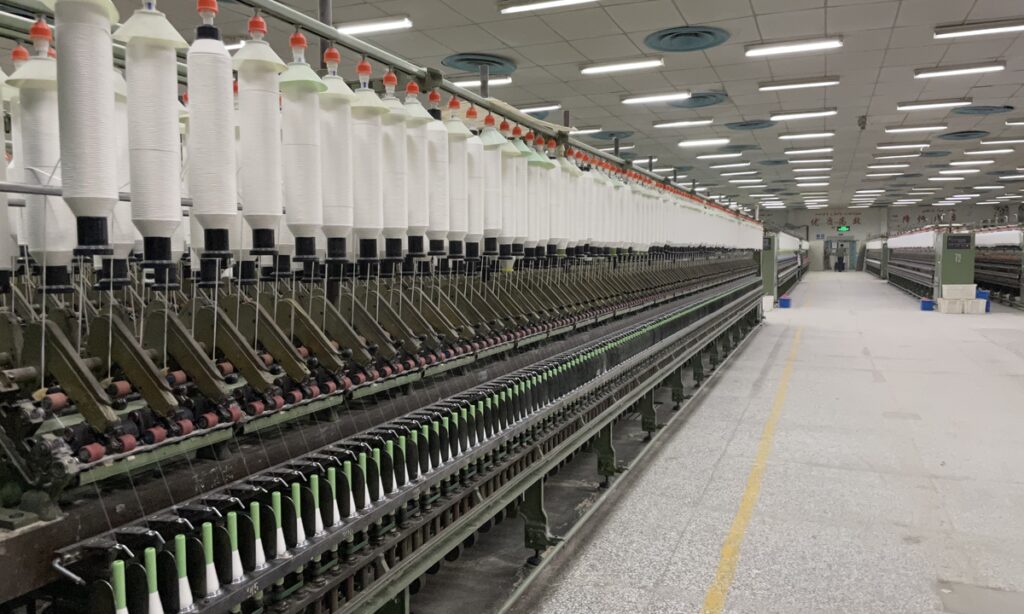H&M, Nike and other fashion retailers’ boycott of cotton produced in Northwest China’s Xinjiang Uygur Autonomous Region is an unjustified move while they rely on China’s market for growth. Meanwhile, Xinjiang-grown cotton isn’t enough to meet China’s domestic demand, data shows.
The Western companies’ refusal to source Xinjiang cotton will send ripples through the supply chains, industry analysts said. However, its consequence is likely to be absorbed, thanks to the rapid rise of Chinese domestic sportswear and fashion brands.
In a suicidal move that also infuriated Chinese consumers, Nike and H&M released statements not to source Xinjiang cotton, which immediately caused Chinese people to boycott H&M, Nike and other Western brands in the world’s largest fashion market.
Chinese consumers have responded with their action to answer the so-called commercial decisions made by those individual companies, Gao Feng, spokesperson for the Ministry of Commerce (MOFCOM), told reporters on Thursday.
Gao called on those companies to respect market rule, rectify their wrongdoings, and avoid politicizing Xinjiang cotton.
Since the 1990s, China’s main cotton-producing area has shifted from the Yellow River basin to Xinjiang, and the region is a major global cotton-producing area. Xinjiang’s cotton output accounts for 20.8 percent of the global production in 2020, according to Mao Shuchun, a research fellow at the China Cotton Industry Alliance.
The region’s cotton production has been mechanized by using seeding machines, insecticide spraying machines, and drones to plant cotton, Mao told the Global Times on Thursday.
As the world’s largest cotton consumer and the second-largest cotton producer, China’s cotton output will hit 5.95 million tons in 2020-21, while the country’s demand for cotton are estimated at 7.8 million tons – an annual gap of 1.85 million tons, the Xinhua News Agency said, citing China Grain Reserves Group.
Xinjiang’s cotton output grew 3 percent year-on-year to 5.16 million tons in 2020, accounting for 87.3 percent of the country’s total output, according to data from the National Bureau of Statistics.
In order to meet domestic demand, China imports 2 million tons of cotton every year, and the country has explored new sources of imports, such as from Brazil and India.
In addition, the country has put in place a cotton reserve system to relieve cotton farmers’ concerns, said the Xinhua report. As more cotton-harvesting machines are used, the amount of machine-picked cotton as a percentage of the total crop in 2019 reached 42 percent.
Xinjiang’s long-staple cotton is top-rated in the world, and clothes and quilts made of the cotton feel warm and comfortable. In the past years, locally produced cotton has been in short supply, making the region a hot destination for cotton investment.
Grace, a textile company based in East China’s Zhejiang Province, completed a cotton-growing, harvesting and weaving plant in Xinjiang in 2017. The facility has created 8,000 jobs for local residents so far, according to Huang Tingyu, vice president of Grace.
The controversial cotton ban that put the Better Cotton Initiative (BCI) – a non-governmental organization whose membership includes Nike and H&M – in the limelight, is sending ripples through local supply chains, the Global Times learned.
Zhang Biao, chief manager of a company named Zhongwang in Yuli county of the Bayingolin Mongolian Autonomous Prefecture in Xinjiang, told the Global Times on Thursday that following the controversy sparked by H&M’s announcement – which mentioned the BCI license suspension – cotton-ginning companies are no longer sure about consumer expectations, with the price of ginned cotton declining from 15,600 yuan ($2,386) per ton to 14,900 yuan per ton.
The BCI’s programs in Xinjiang account for 15-18 percent of the region’s total yields, and about 400,000 to 500,000 tons of cotton from the region are used in the supply chain. Suspending the licenses means that the same volume of cotton will have to be imported.
“The value of BCI’s certificates depends on who are your target customers. If your customers are BCI retailers and brand members, then its certificates and licenses are important because with no certificate, you cannot sell your products to the companies,” Zhang told the Global Times.
Local cotton farmers are unlikely to be affected by the disruption caused by the ban, Wang Qianjin, head of the information department at the Shanghai International Cotton Exchange, told the Global Times on Thursday, citing a state sourcing program to support rural farmers.
Downstream clothing factories, especially if they are export-oriented, may take a hit, according to Wang, reckoning these businesses to consider a shift toward indigenous brands that count much less on overseas markets.
“The short-term repercussions on some clothing manufacturers for foreign brands would be offset by the rise of domestic sportswear and fashion makers,” he said.
Buoyed by a growing preference, shares of Chinese competitors to Nike – including Li Ning and Anta Sports – rallied on Thursday.
In a statement on its website on Thursday, the China Cotton Association (CCA) voiced staunch support for Xinjiang cotton and firm opposition to the restrictions on Xinjiang’s textile and apparel supply chains being imposed by Western countries, led by the US. The association strongly urged them to stop their wrongdoings.
More than half of the farmers in the Xinjiang region plant cotton, and minorities represent 70 percent of the farmers, read the statement, revealing that earnings from cotton planting account for 80 percent of local agricultural income, and the local cotton textile sector represents 600,000 jobs.
The Chinese cotton and textile sector has safeguarded employees’ dignity at work, improved their working and living conditions, enhanced product quality, and provided stable and efficient supply chains for global clothing and retailing brands, the CCA statement said.
It lashed out at Western governments’ reckless clampdown, which would deal a direct blow to the most fragile part of the supply chains, and undermine the interests of consumers, retailers, distributors and importers.
The cotton gins in a coat factory in Northwest China’s Xinjiang Uygur Autonomous Region



